
|

Buckfast is a living monastery. Here, a community of forty-four monks lead a life of prayer, work and study. Community life, like family life, invilves the sharing of work under an agreed set of rules, and the success of the system is shown by the fact that there have been monasteries like Buckfast since the 6th century AD, when St Benedict wrote his Rule for monks.
The first monastery at Buckfast was founded in 1018 AD, in the reign of Cnut. In 1147 the Abbey was transferred to the Cistercian order and completely rebuilt. By the 15th century the Abbey had reached its peak before its dissolution under Henry VIII on February 25th 1539. After the dissolution most of the buildings were either remodelled, destroyed, or left to fall into ruin. Neverthless Buckfast today appears very much as it would have done in medieval times, for when the monks returned to the site in 1882 they discovered the medieval foundations and rebuilt the whole abbey in the style which the Cistercians would have been used.
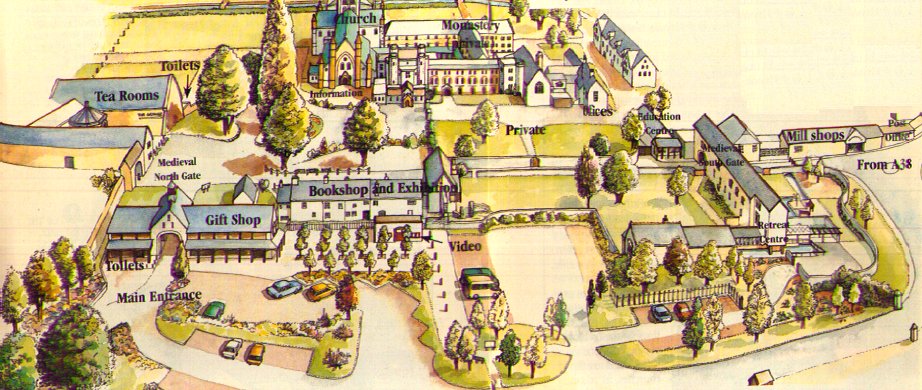
This is another of my favourite places. The whole complex is a delight - and it's all free!! The toilets here have to be the cleanest in the universe! Try them!
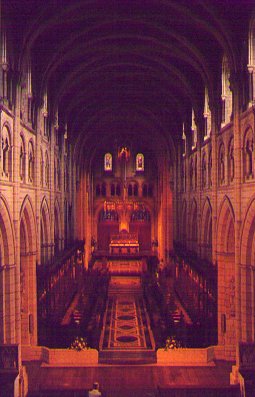 |
The Divine Office - the daily routine of prayer and worship - is the central part of the monk's day: in all, some 3 and a half hours are spent in the church during the day's six services. Some of the monks' chants have not changed since medieval times. The Abbey's organist and composer, Father Sebastian Wolff, has written music for the entire annual cycle of responsorial psalms, as well as anthems, masses and organ pieces. There are more recordings of music from the Abbey, and the frequent concerts and broadcasts acknowledge Buckfast's standing in the world of music. |
| The Stained Glass Father Charles Norris trained at the Royal College of Art, and has developed a modern French style of stained glass window using thick 'tiles' of glass, chipped to shape and set in concrete or epoxy resin. Over the last fifty years three of the monks have designed and made windows for over 150 churches, as well as many private commissions. |
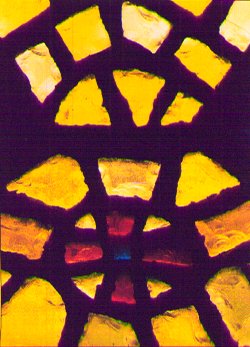 |
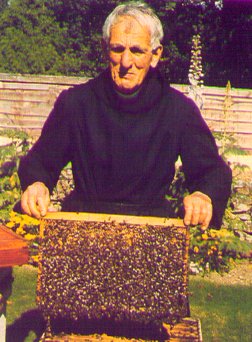 |
Beekeeping Amongst beekeepers the name of Buckfast is known all over the world. Bees have always been kept at Buckfast. Visitors today can see the remains of a line of 'bee boles' - recesses for the old basketwork bee skeps - in an ancient wall by the lawn near the South Gate. Brother Adam has contributed more than seventy years of his life to beekeeping at the Abbey and it is to him that Buckfast owes its fame in this field. His long career has been spent breeding a new kind of bee - now knows as the 'Buckfast bee' - which is disease-resistant, gentle, rarely swarms and is above all a good honey producer. The Buckfast queens are bred in isolation in the centre of Dartmoor, but the 320 honey hives are distributed around the Abbey grounds and local farms and orchards until late summer, when they are all taken to Dartmoor for the heather crop - which makes the finest honey. |
| Tonic Wine Many monasteries have been associated with wine since the early days. Nearly all the famous Burgundy vineyards were established by monks, as were the liqueurs Benedictine and Chartreuse. The Buckfast monks brought their own recipe from france when they restored monastic life at the Abbey in 1882. A full-bodied red fortified wine from Southern France is used as the base. The monks add the ingredients to turn this into a smooth, balanced tonic wine, which is matured in the Abbey vats before being bottled and distributed in Britan and abroad. Right. Father Richard testing the tonic wine. |
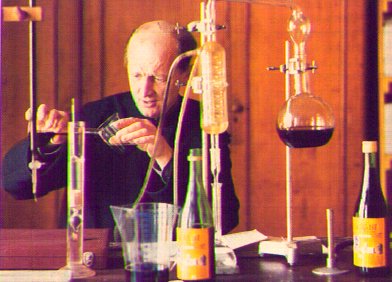 |
Now open!Buckfast Abbey's new Monastic Produce Shop Specialising in products made at Buckfast and in monasteries and convents throughout Europe:
The monastic produce shop is located in a newly refurbished mill, through the car park, up the hill from the gift shop. Special introductory offer Beer from the monastery of Andechs, Bavaria half-litre bottles, 5, 6 and 7% vol. £1.80 per bottle Crate of 20 - have a party or barbecue! - £33 (that's only £1.65 per bottle!) |
Dartmoor Otter Sanctuary |
Just up the road from the Abbey is this interesting place. I LOVE the otters, but I'm not keen (at all) on the butterflies - they are like big, black flying spiders to me! And they land on you! Eeeeeeyuk!
(From the the leaflet)
Visiting the Buckfast Butterfly Farm and Otter Sanctuary is like discovering a different world. First, you will find yourself in a "tropical rain forest", complete with ponds and waterfalls. Lush tropical plants and flowers tower over your head, and exotic fruits such as kiwi and pineapple flourish. Wherever you look, you will see butterflies from all over the world. They come in a kaleidoscop of colours from brilliant electric blue to subtel camouflage tones, and display wing spans ranging from less and an inch to one foot. (YES INDEED!). They live and breed here as they would in the wild. You can study every stage of their life-cycle at close quarters, and can even witness the magic of a butterfly emerging from its chrysalis in our special hatchery. An interesting range of fish, birds, terrapins and other creatures (?) share the butterflies habitat, and help to make it even more fascinating.
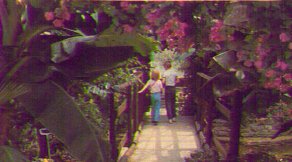
 |
Leaving the rain forest, you move into the very different environment of the Otter Sanctuary. It is a delightfully landscaped outdoor area with plenty of water features, designed to give our lively otters all the fun and stimulation they need. It is a joy to watch them playing and swimming, and you can even see their graceful underwater movements from a special viewing tunnel beneath one of the pools. Otters live in holts, and we have designed an ingenious mirror system which allows you to observe their home life without disturbing them. Feeding times are always great fun, and take place at 11.30am, 2.00pm and 4.30pm during the summer season. |